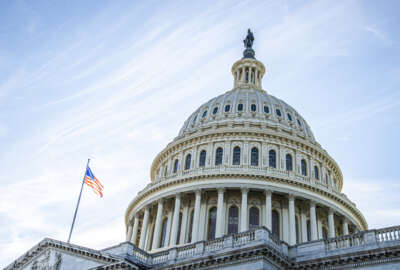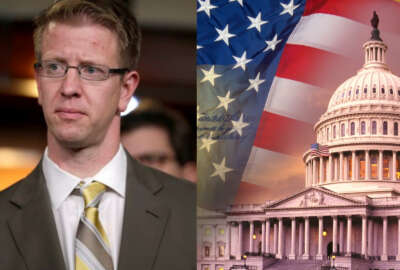Bill automatically increases feds’ TSP contributions
Sen. Daniel Akaka (D-Hawaii) introduced legislation Monday that would automatically increase new federal employees' contribution rate to their federal 401(k) style...
Sen. Daniel Akaka (D-Hawaii) introduced legislation Monday that would automatically increase new federal employees’ contribution rate to their federal 401(k) style Thrift Savings Plan.
Since 2010, newly hired federal workers have been automatically enrolled in the TSP with a default contribution rate of 3 percent of their base pay. Employees are free to contribute more or to opt out of the program entirely. Akaka’s bill, the “Save More Tomorrow Act,” would automatically escalate the contribution annually by 1 percent for the two years following initial enrollment. That gradually raises the contribution rate to 5 percent, allow employees to take full advantage of matching contributions from their agencies.
As with enrollment, the automatic increases are voluntary, and feds can opt out if they choose.
Most federal employees contribute much more than the minimum 3 percent or even the 5 percent that garners them the full benefits of the agency match. The average contribution is about 11.5 percent. Still, about 9 percent of feds contribute less than 5 percent.
Bill takes targeted approach
Akaka stressed the bill’s targeted approach.
“It would increase the savings only of the small percentage of new employees who enroll in the TSP, but do not contribute enough to reach the full five percent match, leaving compensation to which they are entitled — and will need for retirement — on the table,” Akaka said in a statement, when the bill was introduced.
However, Akaka said automatic escalation is particularly helpful for lower-income federal employees. He pointed to a recent survey of TSP participants, which found those making under $25,000 a year were the most likely to cite automatic enrollment as the reason for contributing to the TSP.
“From the most recent survey of TSP participants, we know that just like in the private sector, low-income workers who can least afford to forgo matching contributions are the most likely to do so,” Akaka said.
According to the survey, 58 percent of the respondents said they didn’t contribute at the 5 percent level because they couldn’t afford it, while 18 percent said they weren’t aware of the agency match.
Agencies match dollar-for-dollar the first 3 percent employees contribute to the TSP and 50 cents for every dollar on the next 2 percent.
Concept developed by academia, common in private sector
Akaka’s bill takes its title from a a concept developed by Richard Thaler, of the University of Chicago, and Shlomo Benartzi, of UCLA.
“Automatic enrollment is a great way to help people overcome inertia and start saving for retirement, however many employees get stuck at that initial 3 percent rate and stay there,” the two professors stated in a release. Automatic escalation by 1 percent a year, they contend, helps combat feds’ contribution complacency.
The concept of automatic escalation is also fairly common in the private sector, having been encouraged in the 2006 Pension Protection Act.
Testifying at a Senate Subcommittee of Oversight of Government Management hearing on financial literacy last month, Harvard Professor Brigitte Madrian said the number of employees that participate in automatic enrollment differs widely based on whether employees must opt in to the program or whether they are automatically enrolled.
“The evidence there from the private sector is, if it is a feature you have to opt into, about 25 percent of participants will opt into it and experience the automatic increases every year,” Mardian said. “If you make it an automatic feature that you have to opt out of, about 25 percent of them will opt out of it. So, you get a different impact on about half of the participant population depending on whether you make it an opt-in or an opt-out feature.”
RELATED STORIES:
Feds satisfied with TSP, survey finds
5 things feds should know about Roth TSP
Copyright © 2024 Federal News Network. All rights reserved. This website is not intended for users located within the European Economic Area.





